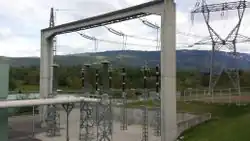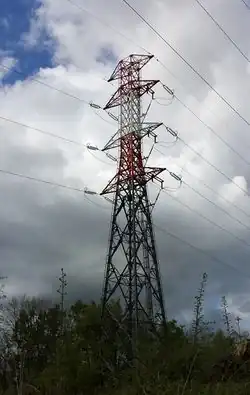Tag:line_management=transition
 |
| Description |
|---|
| A transition is a location change, often when overhead line connects to underground cables. It shouldn't be confused with termination. |
| Group: infrastructure |
| Used on these elements |
| Implies |
| Useful combination |
| Status: approved |
| Tools for this tag |
|
Usage
A transition is a location change, often when overhead line connects to underground cables.
For overhead (or underground) lines stopping without connecting to a line in another location, you should use termination
This value is only suitable for overhead lines that stop.
For underground cables connecting to a continuous overhead line, see branch.
This value should be used in combination with existing location:transition=yes.
This value can't be combined with itself, cross and straight to describe several situations on the same support level.
It is not part of IEC 60050 norm.
Examples
Power
| Photo | Location | Tagging | Note |
|---|---|---|---|
 |
France |
|
The concrete portal should be mapped as a way and the line should connect to it on a power=insulator node. A bay line (inside the substation) connects to the incoming line, it's a |
 |
France |
|
Two power circuits split on this tower with an underground transition |
 |
France |
|
A medium voltage overhead power line connects to an underground power cable on a pole. It's a straight connection without situation like branch or split so it's a transition. |